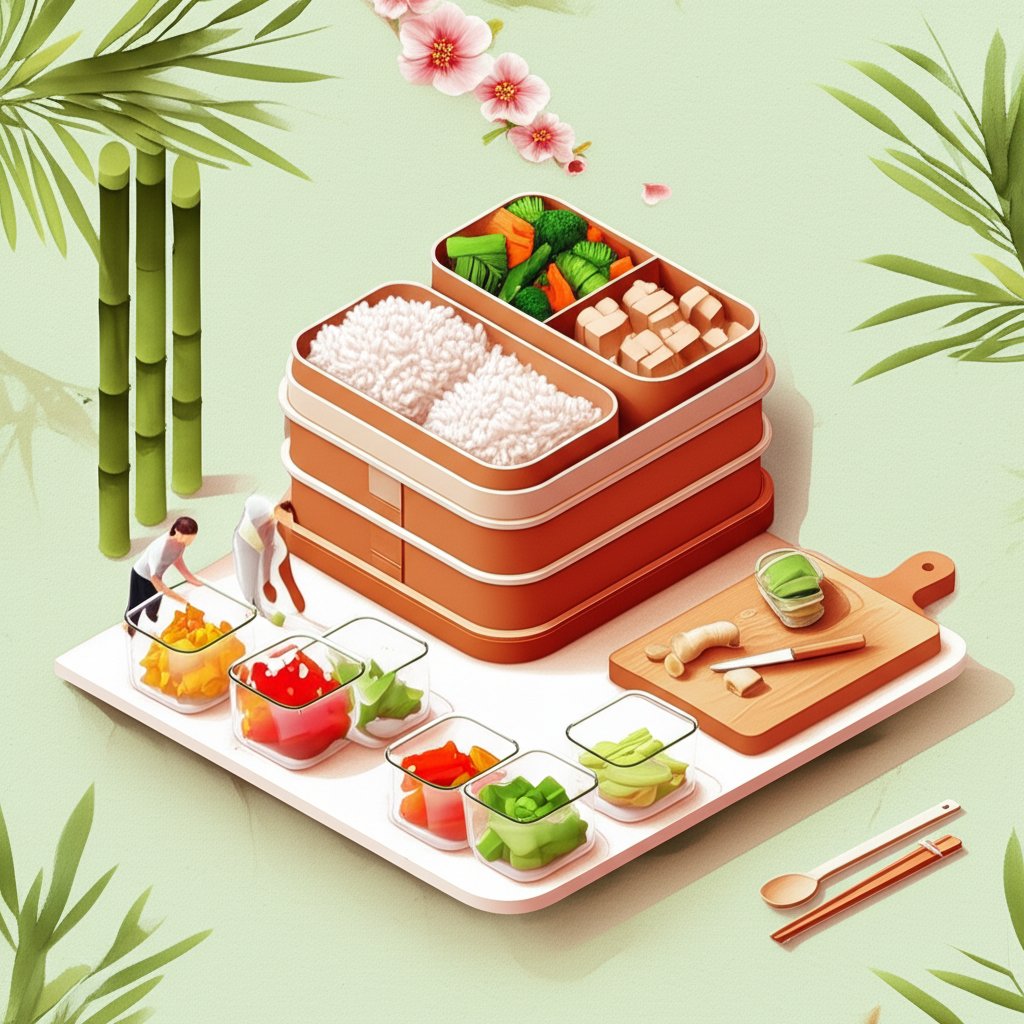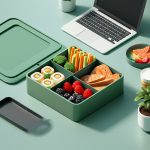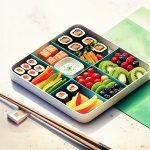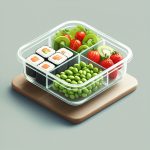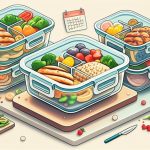Tired of the weekday dinner scramble but craving something more exciting than bland chicken and broccoli? The world of asian meal prep ideas offers a vibrant solution, transforming your busy week with meals that are as delicious and nourishing as they are convenient. Forget spending an hour in the kitchen every night; with a little planning, you can have dishes like Korean beef bowls, Thai coconut curry, or savory tofu stir-fries ready in minutes.
This guide goes beyond just recipes. It’s about building a flexible system—prepping core components you can mix and match to create diverse, healthy meals all week long.
At a Glance: What You’ll Learn
- The “Component Prep” Method: How to prep proteins, grains, vegetables, and sauces separately for maximum freshness and variety.
- A Practical Sunday Game Plan: A step-by-step workflow to get your entire week’s prep done efficiently in just a couple of hours.
- Smart Storage Secrets: Learn how to store different elements to prevent soggy veggies, dry proteins, and lackluster flavors.
- Meal Ideas for Every Diet: Specific, prep-friendly ideas for chicken, beef, seafood, and plant-based dishes.
- Sauce is Boss: Master a few versatile, make-ahead sauces that can elevate any simple combination of ingredients.
Rethink Your Prep: The Power of Components
The secret to successful and sustainable Asian meal prep isn’t cooking five completely different meals on Sunday. That path leads to burnout. Instead, focus on “component prepping”—creating a toolkit of ready-to-go ingredients that can be assembled in different ways.
Think of it like a build-your-own-bowl bar in your own fridge. This approach keeps textures fresh (no more sad, soggy stir-fries) and prevents flavor fatigue. Mastering these components is the first step. For a complete framework on planning your week, check out our guide to Flavorful Asian meal prep.
Here’s how to break it down:
- The Base (Carbs & Grains): Cook a large batch of a neutral grain. Jasmine rice is a classic, but brown rice, quinoa, or soba noodles work wonderfully. Let it cool completely before refrigerating in a sealed container to prevent it from getting mushy.
- The Protein: Cook your protein of choice, but consider undercooking it slightly if you plan to reheat it in a pan. For marinades, you can prep the raw, marinated protein and store it in bags to cook fresh in minutes.
- The Veggies: This is where many go wrong. Don’t cook all your vegetables ahead. Instead, wash, chop, and store them raw. Hardy veggies like broccoli, carrots, and bell peppers can be pre-chopped and stored in airtight containers. More delicate greens like bok choy are best chopped right before cooking.
- The Flavor (Sauces & Aromatics): This is your secret weapon. Whisk together a jar of teriyaki glaze, a peanut-lime dressing, or a simple ginger-garlic stir-fry sauce. Mince a large amount of garlic and ginger and store it in a small jar covered with a neutral oil. This saves precious minutes every single night.
Your Sunday Prep Playbook: An Hour-by-Hour Guide
Set aside about 90 minutes on a Sunday afternoon. Put on some music, and let’s get it done. This timeline is designed for maximum efficiency.
First 30 Minutes: Grains and Proteins
- Start the Rice: Get your rice cooker or a pot on the stove with a big batch of jasmine or brown rice. This is hands-off, so do it first.
- Marinate the Proteins: While the rice cooks, prep your proteins. Slice chicken thighs for teriyaki, cube extra-firm tofu for a stir-fry, or thinly slice beef for a bulgogi-style bowl. Get them into their respective marinades (in separate containers or bags) and into the fridge.
Next 45 Minutes: Veggies, Aromatics, and Sauces - Chop the Veggies: Wash and chop all your hardy vegetables for the week—broccoli florets, sliced bell peppers, julienned carrots, sliced onions. Store them in separate airtight containers.
- Prep Aromatics: Mince a week’s worth of garlic and ginger. Finely slice scallions, separating the white/light green parts (for cooking) from the dark green tops (for garnish).
- Mix Your Sauces: In mason jars, whisk together the ingredients for 1-2 key sauces. A versatile stir-fry sauce (soy sauce, rice vinegar, sesame oil, cornstarch) and a Thai peanut sauce are excellent starting points.
Final 15 Minutes: Cool and Store - Cool Everything Down: Spread your cooked rice on a baking sheet to cool quickly and prevent clumping. Let any cooked proteins cool as well. Never put hot food directly into a sealed container in the fridge.
- Portion and Label: Once cool, portion your grains and proteins into individual meal prep containers. Label everything with the contents and date. Your prepped raw veggies and sauces go into their own containers.
Meal Prep Ideas in Action: From Components to Delicious Dinners
Here’s how those prepped components transform into quick weekday meals.
For the Chicken Lover: Teriyaki & Thai Peanut Bowls
- Sunday Prep: Cook 2 lbs of chicken thighs, cubed. Make a batch of jasmine rice. Chop broccoli and bell peppers. Whisk together a Teriyaki sauce (soy sauce, mirin, sake, a little sugar) and a Thai Peanut Sauce (peanut butter, lime juice, soy sauce, sriracha, water).
- Monday’s Meal (10 mins): Reheat rice and chicken. Steam or quickly stir-fry the pre-chopped broccoli. Drizzle with Teriyaki sauce.
- Wednesday’s Meal (10 mins): Reheat rice and chicken. Stir-fry the bell peppers. Toss everything with the Thai Peanut Sauce and top with crushed peanuts and fresh cilantro.
For the Beef Fan: Korean-Inspired Bulgogi Bowls
- Sunday Prep: Thinly slice 1.5 lbs of sirloin or flank steak and marinate in a bulgogi-style sauce (soy sauce, pear puree or brown sugar, sesame oil, garlic, ginger). Cook a batch of short-grain rice. Chop carrots and onions.
- Tuesday’s Meal (15 mins): Heat a wok or large skillet over high heat. Sear the marinated beef in batches (don’t overcrowd the pan!). In the same pan, toss the carrots and onions for 2-3 minutes. Serve over rice, topped with kimchi and a sprinkle of sesame seeds.
For the Plant-Based Pro: Sesame Tofu & Veggie Stir-Fry
- Sunday Prep: Press and cube 2 blocks of extra-firm tofu. You can either bake it until golden or pan-fry it. Cook a batch of soba noodles or quinoa. Chop bok choy, mushrooms, and snap peas. Whisk together a Sesame-Ginger Sauce (soy sauce, rice vinegar, sesame oil, minced ginger, garlic).
- Monday’s Meal (10 mins): Reheat noodles and tofu. In a hot pan, stir-fry mushrooms for 2 minutes, then add bok choy and snap peas for another 1-2 minutes until bright green and tender-crisp. Toss everything with the sauce.
Quick Answers to Common Meal Prep Questions
Q: How do I keep my stir-fried vegetables from getting soggy?
A: Don’t pre-cook them! The best method is to chop your hardy veggies (broccoli, carrots, peppers) raw and store them in an airtight container. When you’re ready to eat, stir-fry them for 3-4 minutes over high heat. They will be perfectly crisp. For reheating a fully cooked stir-fry, use a hot pan for a minute or two instead of the microwave.
Q: Can I freeze Asian meal prep dishes?
A: Absolutely, but be selective. Curries (like Thai Red Curry), soups, and saucy braised dishes (like Filipino Chicken Adobo or Taiwanese Minced Pork) freeze beautifully. The flavors often deepen. Rice also freezes well. Avoid freezing dishes with delicate, high-water-content vegetables (like cucumbers or bean sprouts) or cream-based sauces, as their texture will suffer upon thawing. Noodle dishes can also become mushy, so it’s better to freeze the sauce/protein and cook noodles fresh.
Q: My sauces taste bland by the end of the week. What am I doing wrong?
A: You’re not doing anything wrong, but you can add a “finishing touch.” Prep your base sauce, but save the fresh, bright elements to add just before serving. A squeeze of fresh lime juice, a sprinkle of fresh cilantro or scallion greens, or a drizzle of chili oil can instantly wake up the flavors of a pre-made sauce.
Q: Is it safe to eat meal-prepped seafood?
A: Yes, with proper handling. Cooked fish like salmon and shrimp are generally best eaten within 2-3 days for optimal flavor and texture. If prepping salmon, consider a miso or teriyaki glaze and bake it. It reheats gently in the microwave or air fryer. Shrimp stir-fries are also great, just be careful not to overcook them during the initial prep or reheating.
Your First Step to a Flavorful Week
Feeling overwhelmed by all the asian meal prep ideas? Don’t be. You don’t have to implement everything at once. Start small.
This week, commit to just three things:
- Cook a big batch of rice.
- Marinate and cook one protein (like chicken teriyaki).
- Chop one vegetable (like broccoli).
See how having those three simple components ready transforms your Monday or Tuesday dinner. You’ll be surprised how a little bit of planning can bring so much flavor and calm back to your weeknights.
- Adult Bento Box Lunch Ideas For Quick Healthy Portable Options - December 25, 2025
- Adult Bento Meal Ideas for Delicious, Easy, and Healthy Lunches - December 24, 2025
- Adult Bento Box Ideas for Delicious and Easy Lunches - December 23, 2025
